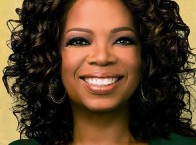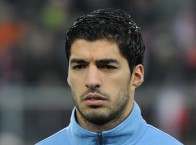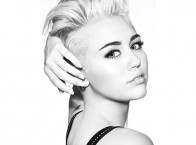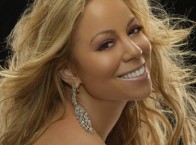Che Guevara, known as El Che or simply Che, was a physician, author, guerrilla leader, diplomat and military theorist. He was a major figure in the Cuban revolution.
- Guevara was born on June 14, 1928 in Rosario, Argentina to Ernesto Guevara Lynch and Celia de la Serna y Llosa. He is the eldest of five children. They are of Basque and Irish descent. His father is a staunch supporter of Republicans from the Spanish Civil War and growing up with family of leftist leanings, he developed a soft corner for the poor, early in his life.
- Despite suffering from acute asthma, he was good at sports enjoying football, swimming, golf and shooting. He played rugby for club Universitario de Buenos Aires and earned a nickname ‘Fuser.’
- In his adolescence and throughout his life he was passionate about books and poetry. He has a collection of around 3000 books. He was also passionate about chess and began participating in local tournaments.
- After enrolling at University of Buenos Aires to study medicine, he undertook his first expedition of 4,500 km through rural province of northern Argentina all by himself.
- In 1951, he took a year off from his studies for a nine month expedition travelling through eight countries. His notes during his expeditions were compiled into a book titled ‘The Motorcycle Diaries,’ which became a ‘The New York Times’ best seller. In 2004, it was adapted in to an award winning film of the same name.
- He met Hilda Gadea Acosta in December 1953 during stay in Guatemala. She was the first female secretary of the Economy of the Executive National Committee for APRA. He married her in September 1955 and divorced in May 1959.
- He was introduced to number of Cuban exiles linked to Fidel Castro by Hilda Gadea through the July 26, 1953 attack on the Moncada Barracka in Santiago de Cuba. During these times, he acquired his famous nickname ‘Che’ due to frequent use ‘che’ as a casual speech filler to call attention just as ‘bro.’
- On September 1954 he arrived in Mexico City and worked in the allergy section of General Hospital apart from giving lecture on medicine at the National Autonomous University of Mexico. He was also photographer with Latin News Agency.
- In June 1955, he was introduced to Raul Castro and subsequently to Fidel Castro by Nico Lopez, a Cuban exile. During his meeting with Fidel Castro, the revolutionary leader, he was convinced Cuban’s cause was the one he was searching. He signed-up as a member of July 26 Movement.
- Even as a combat medic, he undertook military training with member of movement. At the end of the training, he was considered ‘the best guerrilla of them all’ according to General Alberto Bayo, the instructor.
- On November 25, 1956 he was member of 82 men who part took in the first assault on Cuba via a cabin cruiser Gradma. He was one among 22 who survived the attack and preferred a box of ammunition to medical supplies. This was the defining moment in his life.
- He survived to regroup along with other revolutionaries in the Sierra Maestra mountains. As the supplies and morale diminished and with allergy to mosquito bite Guevara considered these time as ‘the most painful days of war.’
- During his stay in the Sierra Maestra Mountains, seeing the suffering of poor farmers, he set up factories to built grenades, built ovens to bake bread, taught new recruits about tactics and organized schools and health clinics.
- As second in command he was harsh disciplinarian, who was feared for his brutality and ruthlessness. But at the same time, he encouraged his rebel fighters to teach the uneducated peasants to read and write. Guevara termed this as ‘battle against ignorance.’
- His commanding officer Fidel Castro had described Guevara as intelligent, daring and an exemplary leader some time even having tendency towards foolhardiness. He was admired for his bravery even by his enemy. He was spared, when they saw him run out in open with his pistol stuck in his belt ignoring the danger to help a wounded rebel.
- In February 1958, he was instrumental in creating clandestine radio station Radio Rebelde, which broadcasts news to Cuban people. He provided telecommunication among growing number of rebel columns.
- In Late July 1958, he was instrumental in stopping the forces of 1,500 men called up by Batista’s General Cantillo to destroy Castro’s forces in the ‘Battle of Las Mercedes.’ His Tactic was described by Major Larry Bockman of the United States Marine Corps as brilliant.
- Guevara led a new column of fighters embarked on a seven weeks march travelling by night to avoid ambush, often not eating for several days. In few days he executed number of brilliant tactical victories that gave him control of Las Villa province.
- On January 2, 1959, Guevara entered Havana to take control of the capital. The final death toll from two years of revolutionary fighting was 2,000 people. Fidel Castro joined him after six days.
- He went to live at summer villa in Tarara to recover from asthma attack. While at Tarara he wrote his book ‘Guerrilla Warfare.’
- In February 1959, the revolutionary government proclaimed Guevara as ‘a Cuban citizen by birth,’ in recognition of his role in the triumph.
- On June 02, 1959, he married Aleida March a Cuban born fellow revolutionary with whom he had been living since 1958. He would have five children from two marriages.
- He was named the commander of the La Cabana Fortress prison for five months in 1959 for exacting revolutionary justice against those considered to be traitors, informants or war criminals.
- On March 4, 1960 a blast at Havana Harbor killed more than 76 people, where he personally provided first aid to the injured. At this memorial service the following day his iconic photo was taken by Alberto Korda known as ‘Guerrillero Heroico.’
- The Cuban government on Guevara’s behest dubbed the year 1961 the ‘Year of Education,’ and mobilized 100,000 volunteers into literacy brigades.
- He was made the Finance Minister, as well as President of National Bank in addition to his Ministry of Industry. As the head of central bank, he was to sign the Cuban currency. He signed the bill solely as ‘Che,’ instead of using his full name due to his distaste for money and the class distinctions.
- He was the architect of Cuban-Soviet relationship and played key role in bringing Soviet nuclear armed ballistic missiles to Cuba that precipitated the Cuban Missile crises in October 1962. As a result Moscow-Washington hotline was established.
- There was two failed attempt on his life by the Cuban exile during his stop at U.N complex. First by Molly Gonzales with knife and later by Guillermo Nova with timer initiated bazooka.
- In early 1965 he went to Congo to offer his knowledge and experience in guerrilla warfare. Later that year on November 20, 1965 he left Congo disheartened due to ill health and inactivity. He wrote in his memoir that ‘we can’t liberate by ourselves, a country that does not want to fight.’
- On October 08, 1967, Guevara was rounded up with 1,800 soldiers and wounded in the ensuring battle. He was captured and executed by Sergeant Mario Teran, who shot him nine times before declaring him dead at 1:10 pm local time.

 Share on Facebook
Share on Facebook




















